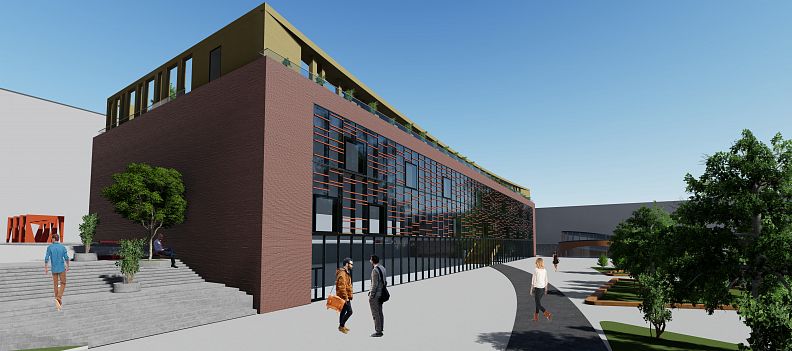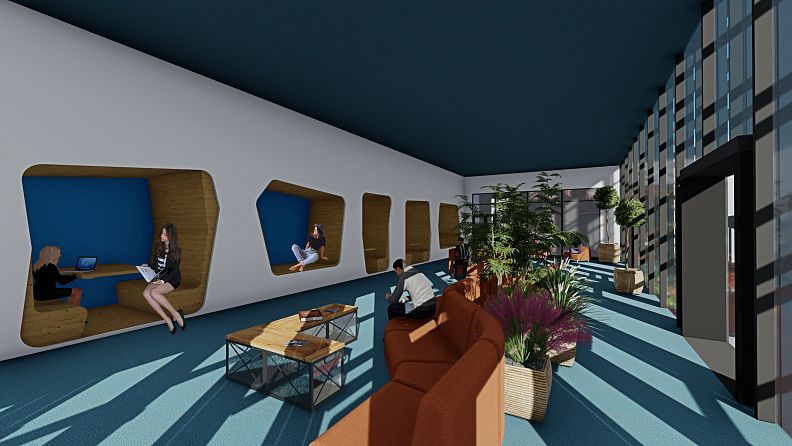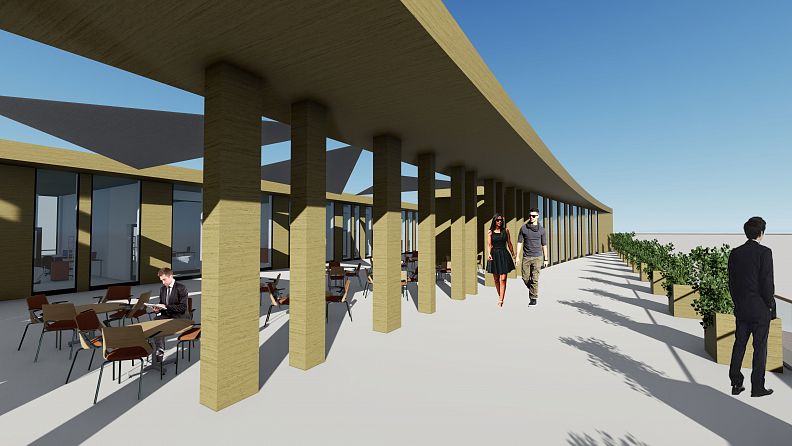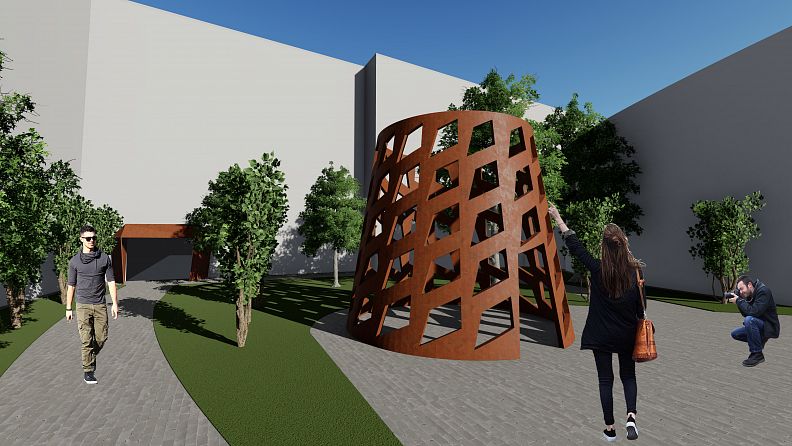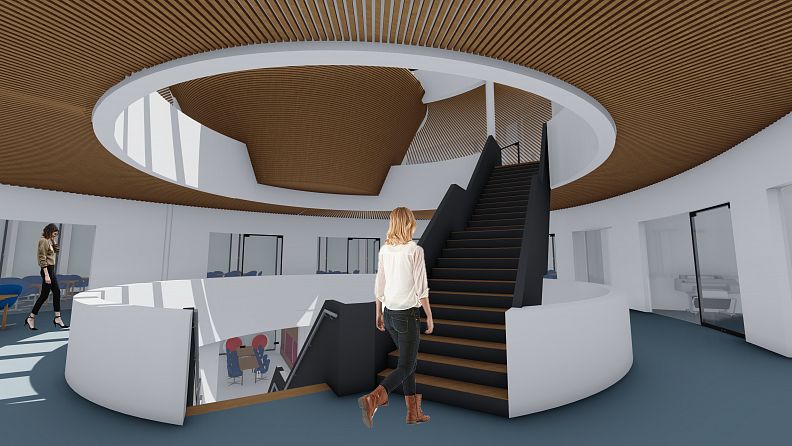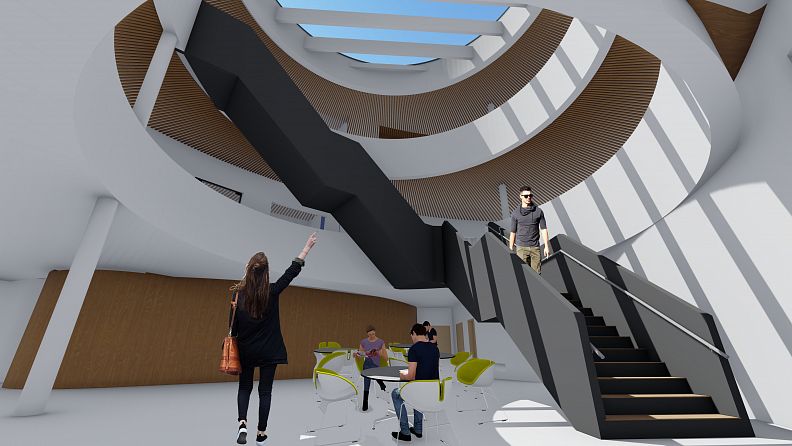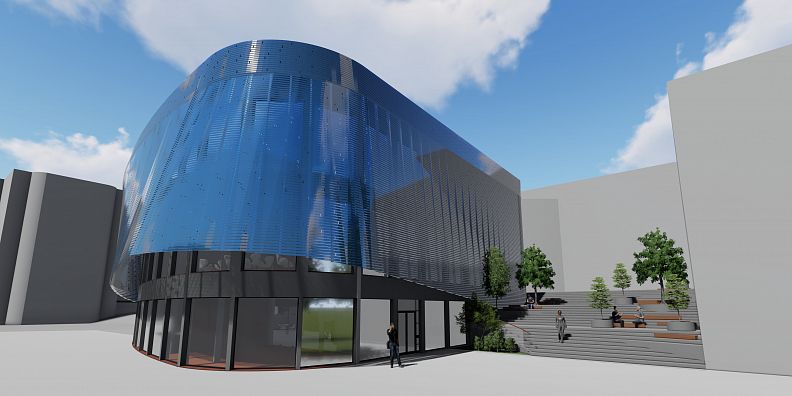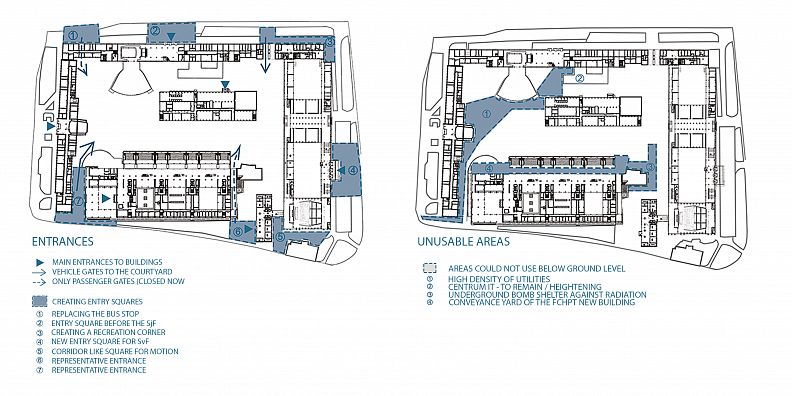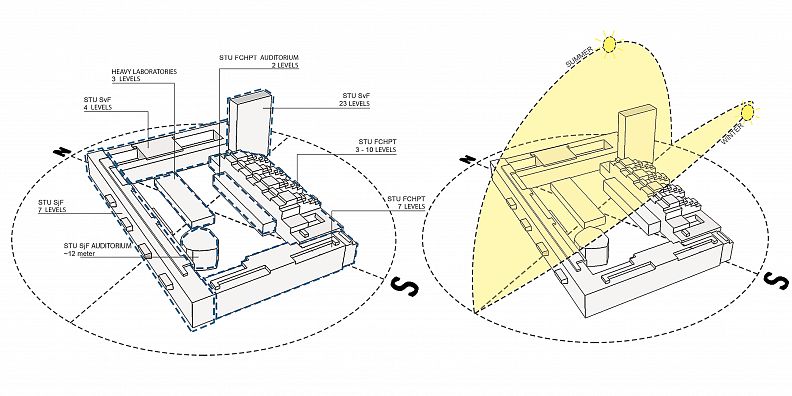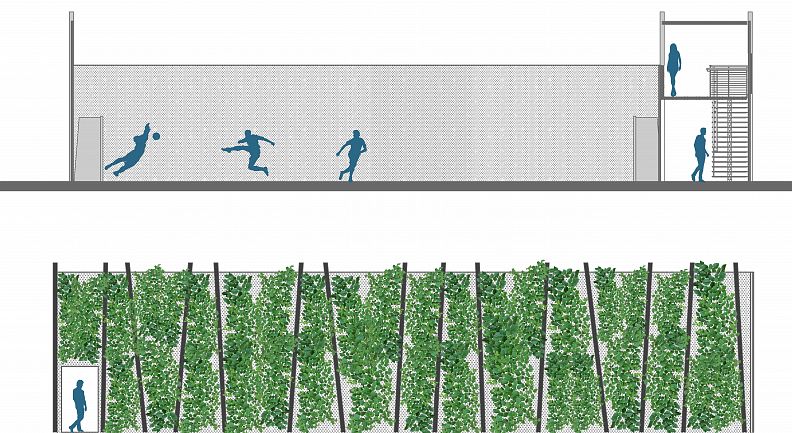New Campus of STU in Bratislava

Project idea
The inner courtyard of the downtown campus of the Slovak University of Technology in Bratislava is a long uncared area. While the students would really want a peaceful and green space to spend time during the classes or after the lectures, they just could not find such a place around the campus. But why would they need to search around for it, if the university can create such university court for itself? I really know all the problems what STU faces recent years, because I spent years between the walls of the Faculty of Civil Engineering of STU. I’ve known the flaws of the campus, but the positive things, the potential of the area as well.
Project description
First things first, I had to make space in the inner courtyard to place new functions. Although I know that the building of the heavy laboratories is an outdated construction, I also knew that is stable and rigid. After a renovation it would be perfect to fill it with new functions. I decided to keep it because of financial and ecological consideration, however in my decision played a huge role the fact, that the building was designed by the famous Slovak architect, Martin Kusy. He also designed the building of the Faculty of Mechanical Engineering, and its great lecture hall. My goal was to give the building a new look that resembles it's original facade. In the ground floor I left place for Volkswagen lecture halls, because I got the information, they don't have any other room to replace their equipment. These halls are reachable from the new underground garage by a huge cargo elevator for vehicles or prototypes. On the first and second floor are the laboratories and offices of the new innovative center of STU. In the new "Hall of Science" students can always learn about new technologies in every field of science. The engine room with all the required mechanical equipment can be placed in the building's old engine room, under the new sport fields of the campus. The sport fields are enclosed with tall fences, covered with wild-vine. It provides sound-proofing, visual and physical barrier and also provides some shadow for the players. I designed the fences around the sport fields to work like a small arena, with some shaded places for spectators.
I placed the Rector's offices right on the top of the heavy laboratories.
In the inner courtyard I placed two new buildings. One is a Co-working building for the students of every faculty present on the campus to meet, talk and work together and organising workshops. I think better cooperation between faculties could lead the STU on a new level of scientific development. I the design of the building I analysed and studied the different learning styles (auditory, visual, verbal, solitary, social etc.) of students, and tried to design a building suitable for every style. The second, smaller building is perfect for recreation of students, but is also contains rooms for model-making. On the ground floor of the building there would be exhibition rooms. The building was place above the entrance of the old nuclear bomb shelter, which I would transform into a permant gallery and exhibition hall.
Technical information
My goal was to design an ecologically and financially reasonable plan for the campus taking into account the sustainability. For the Cooperation building I designed an shading belt built from shadowglass. The building has a huge roof window. It provides not only natural light, but also creates natural ventillation. The buildings can be heated by heat pumps. The soil collectors of the heat pump should be built before the underground garage, below it.
For the innovative science center I designed a ventilated, duoble-shell curtain wall system on the southern side, with shading devices and plants growing between the glazing. The plants act like natural air-filter, while the shading devices keeping the interior from heat in the summer. The airflow cools the air in the gap between the glazing, while the natural ventillation of the building is still possible. In winter, the gap between the glasses is closed - it creates a thermal buffer zone and reduces the heat loss of the building.
For the renovation of the heavy laboratories I imagined a lot of exposed brick walls in the inside and outside as well, to resemble the old fashion of the building.
Documentation
Show PDF 1Show PDF 2Show PDF 3Show PDF 4Show PDF 5Show PDF 6Show PDF 7Show PDF 8Show PDF 9Show PDF 10Show PDF 11Show PDF 12Show PDF 13Show PDF 14Show PDF 15Show PDF 16Show PDF 17Show PDF 18Show PDF 19Show PDF 20Show PDF 21Show PDF 22
